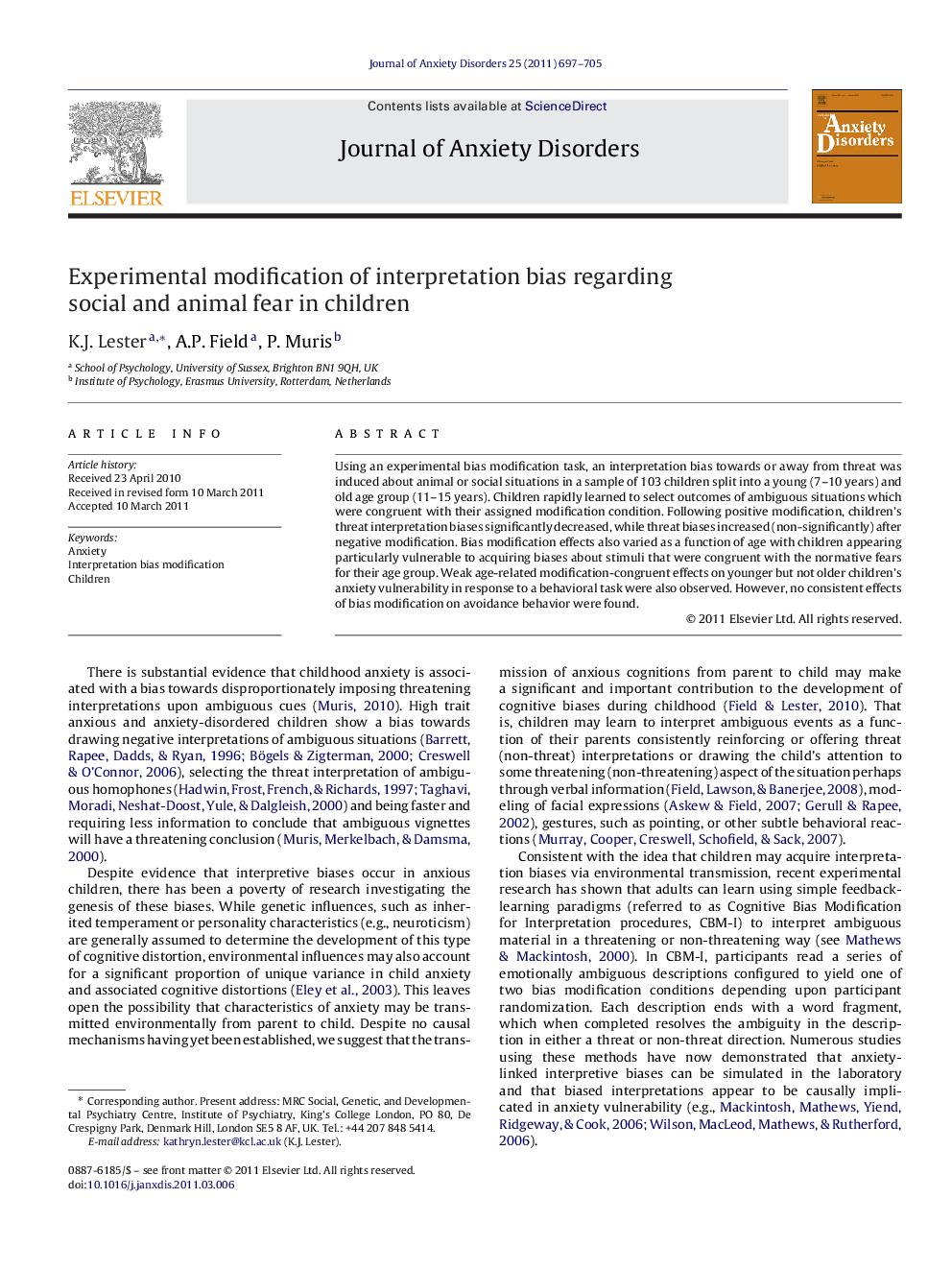| Article ID | Journal | Published Year | Pages | File Type |
|---|---|---|---|---|
| 909448 | Journal of Anxiety Disorders | 2011 | 9 Pages |
Using an experimental bias modification task, an interpretation bias towards or away from threat was induced about animal or social situations in a sample of 103 children split into a young (7–10 years) and old age group (11–15 years). Children rapidly learned to select outcomes of ambiguous situations which were congruent with their assigned modification condition. Following positive modification, children's threat interpretation biases significantly decreased, while threat biases increased (non-significantly) after negative modification. Bias modification effects also varied as a function of age with children appearing particularly vulnerable to acquiring biases about stimuli that were congruent with the normative fears for their age group. Weak age-related modification-congruent effects on younger but not older children's anxiety vulnerability in response to a behavioral task were also observed. However, no consistent effects of bias modification on avoidance behavior were found.
► CBM-I methods were used to modify interpretation biases in children aged 7–15 years. ► Interpretative biases induced about animal and social-related fears. ► Threat biases decreased after positive CBM-I and increased after negative CBM-I. ► Children acquired biases more easily about stimuli that matched age-normative fears. ► Weak age-related effects of CBM-I on anxiety response but no effects on avoidance.
